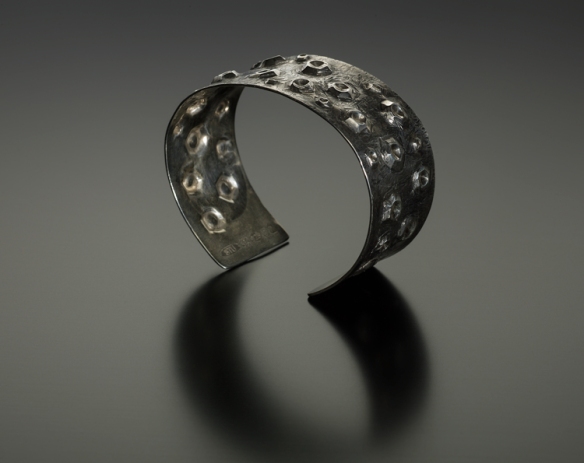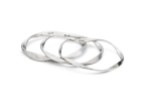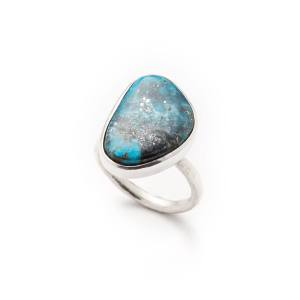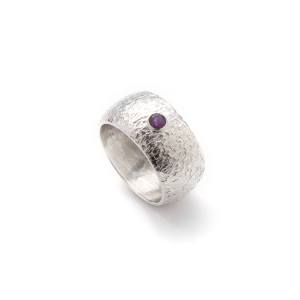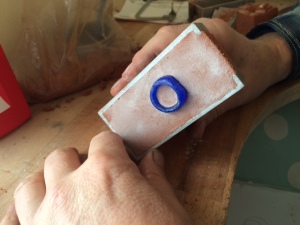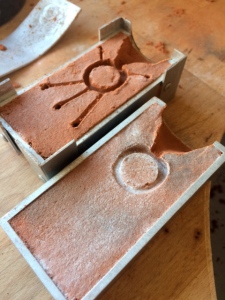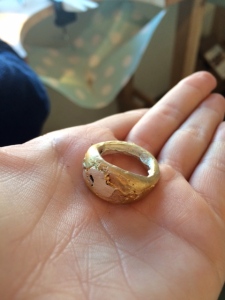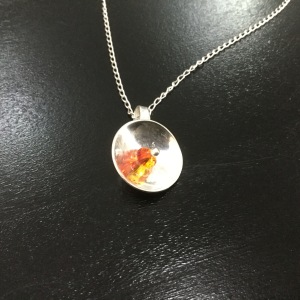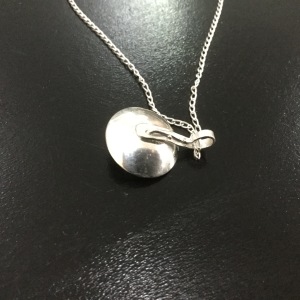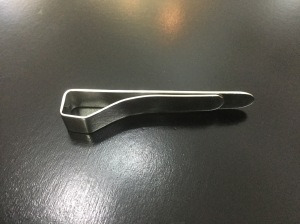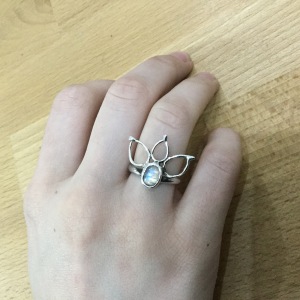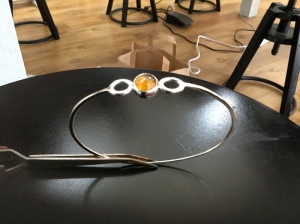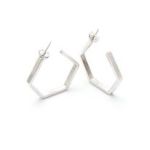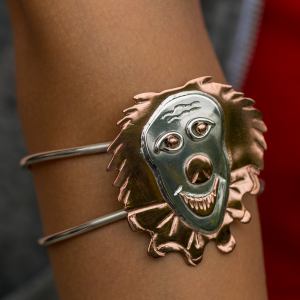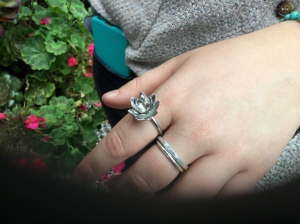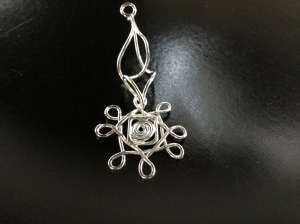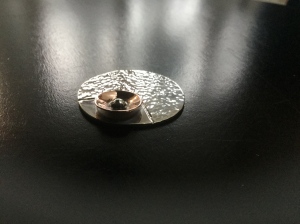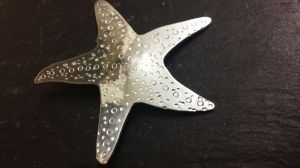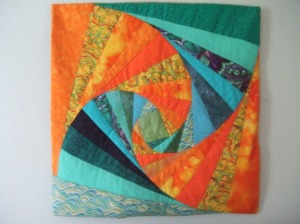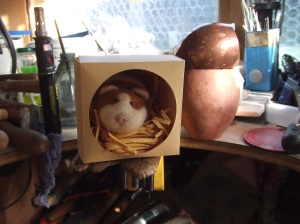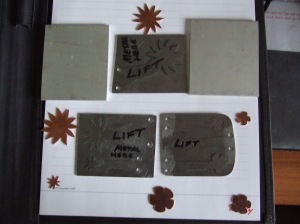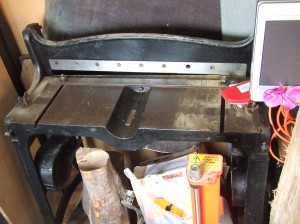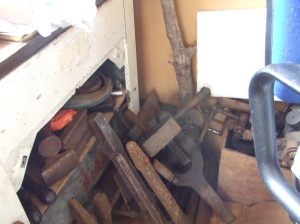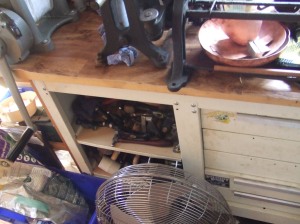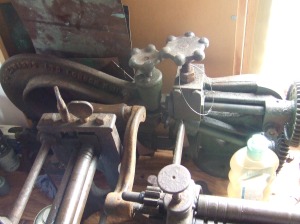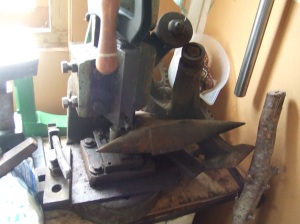Wato wato happy new year.
I have been compelled to re print a section from my final dissertation regarding some of the challenges of selling completed work. The following is a bit of a heavy read, I do hope you take the time to plough through it, let me know if it chimes with you. Better still, have you anything to say, add or repudiate? It would be fantastic to hear from you.
It is my hope that we can start a discussion to help to square the circle that is getting a craftspersons work ‘out there’ as it were.
Challenging perceptions of value Some considerations and experiences for selling
At this time of plenty, people in this country have abundant choice, vast quantities of consumable goods in many and varied marketplaces both real and virtual exist. The relative low cost of buying very complicated, beautiful machines and objects presents challenges for the aspiring small scale producer. The public perception of higher cost, time consuming, low volume, or one off pieces gives incentives to obtain greater understandings. These will help to better understand potential mind sets, working towards formulating more effective sales approaches. The following quote gives an insight into what is a commercial reality for many well connected businesses. A new maker will not enjoy the same economies of scale, nor can they afford to be so dismissive of their customers, dealing as they will, to start at the very least, on a face to face standing.
http://www.newstalk.ie/2012/programmes/all-programmes/down-to-business/on-
this-weeks-show-33/ (2) Gerald Ratner, businessperson famous for his quotes about Ratner Jewellery “People say, ‘How can you sell this for such a low price?’ I say, because it’s total crap.”
This famous quote makes it fair to suppose that the great majority of the buying public are not very aware, nor particularly concerned as to the Providence, or quality of the jewellery they buy from his shops. As Mr Ratner was,and still is, with his new company, a very successful jewellery retailer. Without going into the whys and wherefores of Mr Ratners fall and rise, it is presented here as illustrative of a point regarding cost and value.
Reference was given previously to a blog written for the on line retailer
http://www.tworedtrees. In this blog one question was asked; Who would you most like to wear your jewellery? The following was the authors response;
A thoughtful person who considers my work and appreciates the time taken to make it. I was drawn to make jewellery for individuals, I have no desire to make jewellery for everyone. I feel that many people just wear some items because they were gifts or they were bargains, the wearer having little or no connection to the piece. A little like the feeling of having to have, say a diamond solitaire, because ‘thats what you do’, the wearer having no idea, interest or appreciation of the design, workmanship and trouble taken to realise it, seeing it only as a generic object to be ticked off of a wish list rather than an individuals potential masterpiece that they are the custodian of.
I want people to really desire one of my pieces and cherish it, continually exploring the service both visually and physically, someone who stands out from the crowd and ploughs their own path seeing the hidden beauty that is all around for everyone to see if they take the time to look. Someone who knows the
difference between cost and value as they will need to if they desire to own one of my larger pieces.
This would not be on Mr. Rattners mind, merely maximizing of profits, much else being of little consideration. To many a re seller with no connection, or intreats in obtaining a connection to the things sold in their outlets, economies of scale make this a commercially sound practice.
A maker, living in a very different reality, will have a huge amount of themselves invested in the work they produce. It may become very easy to loose confidence when faced with selling work in a marketplace that is predominately highly cost conscious.
This nation has been evolved from much suffering, enduring great hardship and exploitation to get to this moment. As the workshop of the world, the hub of the industrial revolution, we have progressed to the relatively privileged positions most here enjoy. We are all enjoying the fruits of our ancestors toil, the sacrifices they made, the continuing struggle with the owners of capital for the realisation of a life for living, rather than a working life for little living. All have benefited from the security of a childhood free from exploitation from unscrupulous business interests and all benefited by state provided schools and healthcare systems.
If a company were to set up in this country and employ children and people the way they are recruited in developing countries, as conditions were once here. Justifiable public outrage would result, these business owners would be likely be jailed, held up as an example to all of unacceptable, greedy and unscrupulous persons. These are the realities many people are not aware of, like the air breathed, cheap goods just happen. Would buying attitudes change if consumers were more aware?
As a nation we blindly buy ʻcrapʼ like Mr Ratner provided, safe in our ignorance of the sacrifices made by unseen people who have to suffer so we can have cheap goods. This is justified by the business community in the name of giving them the opportunity to grow as we did. How many of us would watch blindly as a person suffered a debilitating fall that we may have made, smug in the knowledge that they have to learn and experience it for themselves rather than speak up and guide them around the avoidable obstacle.
By thoughtful It was meant to imply a person who is aware and cares about their fellow citizen, having an awareness of the truth behind many businesses. Many consumers may not care, value always being associated with cost in their paradigm, possibly nothing could, or would change that. Others may take a different, more considered stance if presented with the realities highlighted previously. Many people may not be aware, some perhaps may change their perception as this perspective is better understood. A maker may find it productive, appealing to potential customers, perhaps, higher reasoning. The points raised are to give food for thought, this is to enable a reasoned debate with people, less a defense of ʻhigherʼ prices having to be realised to thrive rather than merely survive.
Goods perhaps have become a right if you will. Little thought as to need, rather want driven by avarice or entitlement rather than a true desire or appreciation of an item. The mass production of things that were once the domain of the craftsperson has distorted the equation of cost verses value. As a maker it is very important to make your offerings something other than a thoughtless product. Far more rewarding to elevate your work, making it special, helping to add value, perhaps even exclusivity to your brand. Be mindful that no one can produce high volume repousse work, that is special, customers may have to be better informed of this for enable improved sales success.
From the authors firsthand experience of selling a high ticket price piece to a woman accompanied by her husband, a new understanding that some peoples perception of value is altered when a fuller understanding was appreciated when discovered. The woman in question, at first, dismissed the bracelet saying she would buy the item if it were half the ticket price. After the woman and her husband came to understand the design process, experimentation, prototype model leading to the finished article, they were both genuinely astonished. So much so that they bought the item for the full asking price, both shaking their heads, saying that they would not put in so much effort for so little financial reward. The spouse congratulated the maker and now called it a piece of art, quite a turn around, the piece was the same, only the perception in the buyers mind had changed. It is mentioned in the context of a challenge highlighting this issue, one a maker is often presented with when handmade U/K work is compared with mass produced overseas offerings. In this instance the
ʻexpensiveʼ item the people were viewing was completely turned around after a full understanding of the process was realised.
Just as the point make about the diamond solitaire being little more than a tick box item for many people, perhaps an equal but opposite way of looking at the perception of value could be that a relatively low cost diamond can be viewed as highly desirable as it ʻlooksʼ expensive. Is this what many consumers may want, to look expensive whilst spending as little as is possible? In many instances it would appear so. It would be perhaps be less realistic attempting to appeal to sell such a person a piece such as this, it would not necessary look as though it required as much of an investment when casually looked at.
The ʻexpensiveʼ item was now viewed as cheap as the people framed the cost against the time taken to create it in their own point of reference. As working people in this country they, as we all do, face financial challenges that mean, metaphorically speaking, people in this country canʼt live on a bowl of rice a day, or less than a dollar as others have to enabling them basic survival in less fortunate countries.
Thankfully they connected, realised that the piece was unique, special and a one off that may be re made, but will still be unique as no two will be the same. This presented them with another reason for desiring this piece.
I could be suggested that, due to their being able to discuss the process with the maker, they will always view this item as special and it will likely be something to be cherished for years to come, one of the authors goals.
On a slight tangent, mentioned here in the context of giving hope to the new maker, wishing for a better informed, more understanding consumer. At this time an awakening in the conciseness of a great swathe of the public is taking place. The realisation, for example, that prices paid to farmers verses the profits made by supermarkets is unacceptable. Large faceless corporations are increasingly sourcing our produce from abroad where welfare for animals is largely ignored for the sake of higher profitability, this is being made more aware to the public. Large companies and super farms have been pushing out the smaller farmers by unfair subsides or tactical business strategies. Many have been farming for generations leading to less home grown choice in the high street due to cost being the overriding factor in production rather than the multifaceted value that diversity the smaller concerns present. Many consumers are starting to voice concerns, some no longer blindly buying food without first looking for assurances. Businesses are starting to cater, increasingly for a growing minority of more conscientious, discerning people.
As a maker, it is hoped to hitch a ride on this new awareness. As was written previously no plans exist to make jewellery for everyone. A hope is fostered that a way can be found to better communicate value against the overwhelming weight of hidden cost low price products carry.
These costs, when made apparent to some people, may make a difference to how homegrown handmade work is perceived, perhaps leading to more appreciative customers who now, hopefully make positive connections towards work offered.
Watching the internet grow from its start, seeing how it has transformed peoples attitudes to shopping some observations are worth being mindful of if the maker wishes to peruse this avenue. Engaging with, or overhearing conversations with consumers, when talking of an internet purchase they inevitably insert a phrase something like; and it was cheeper. This is a challenge for unbranded higher ticket items on two fronts. First the choice that this presents to the potential purchaser of products is truly mind numbing. It is very hard to make a piece stand out when many sites have price filters and people will inevitably compare a higher price ʻpictureʼ with a cheap one. This leaves the maker at a distinct disadvantage, a person, ideally, has to wear the item, the full effect being hard to imagine from an image on screen. If a makers reputation is good then this will not present as much of a challenge, providing the potential purchaser is familiar with the makers wares. An extreme example could be perhaps a Rolex watch, the same bought on the internet form Penzance or Paris. Not being in this instantly
recognisable category puts the new maker at a disadvantage that leads onto the challenge of finding the person who will invest in an unknown makers offerings in this environment.
An advantage of the internet not to be overlooked is the ability to use it as a means to show, or promote work. This can be useful as a kind of on line catalogue of the artists achievements, giving pictorial examples of the kind of work produced. Working towards perhaps engaging a persons interest enough for them to contact the maker to purchase or make enquiries for a personal commission.
Social media is also an effective means of promoting work, unpredictable it can also aid creativity by the visiting of others sites and gaining new perspectives. Other people can engage with the maker, perhaps not buying work, but leading the maker to discover many more things than would unlikely on a solitary journey looking to find information. Used as a new type of business card it is also great to be able to send your on line address to perspective outlets or clients, letting them browse at their leisure. The creation of a website is now becoming ever easier, cost effective and normal to expect from outlets that the newcomer may approach to represent them by displaying work produced.
Good representation is perhaps the most productive and the main approach that is invaluable to the new maker of low volume work looking to establish themselves in this diverse marketplace. One of the places to seek this is a gallery of some description. Consumers who visit such establishments are already
primed to expect prices that reflect the exclusivity of bespoke or low volume produced work. Upon entering a gallery many are more accepting of higher asking prices for often unique works. This being perhaps a reason for them to visit to be able to find one off special pieces, rather than a cheeper items available most anywhere from a branded high street retailer. Careful selection of the gallery is important as the makers work must be able to be seen in a like context with competing makers. Not much good selecting a gallery that are specialists in unrelated disciplines, or very much lower price point work that may make yours look expensive by association.
Going back briefly to the woman mentioned previously who bought a costly bracelet after speaking to the author. That piece was in a shop that predominately sells low priced items. This set the context for the person before they started as the pieces leading up to this piece were many times cheeper. One can only imagine the shock when the price is realised after browsing the items next to it. Perhaps this set the mindset that led to the comment by her ʻhalf price.ʼ
This would have been, in the shop owners opinion, most unlikely to have been the result had the maker not been there. The customer, perhaps, would not have been able to re think their first opinion that it was one hundred percent too expensive. In the context of that shop, perhaps she was right, It was very fortunate for the author to be able to connect with their values face to face on that day. This is presented to illustrate that even surrounded by less expensive work,
some people will understand and still buy. However it would not be wise to rely upon these chance occurrences for future success in selling work. Actively seeking out outlets that will support and promote you as a maker is invaluable. With this in mind Galleries were looked at to discover what they had to offer.
It pays to be very mindful of the effect that a strong personality can have upon the buying decisions of a potential purchaser. It is a fine line between informing and bulling that is a real skill few posses. Watching with fascination as a woman at a gallery selling various types of work engaged with potential purchasers. Her whole persona was professional yet warm, friendly and approachable. A middle aged woman of immaculate dress and a warm smile she was able to seamlessly guide conversation from the mundane polite chit chat towards finding out a little about people who entered the gallery. Asking questions that were never probing, although giving her an insight into the taste of the strangers before her. Her ability to engage eye contact and gently lead people to specific works was inspiring. The way she talked about the artists she represented was warm and very informed leaving the person in no doubt that this person could answer any question they may have about an individual artist, or would be untroubled to find out if she did not. The reason this is mention here is the obvious effect this has upon potential customers. A person representing a particular artists work of this caliber and dedication is priceless, they attempt to convey their enthusiasm for that persons work every bit as well as the creators of the pieces themselves.
I hope you managed to stay awake to read this, as always please do share your thoughts.
Very best wishes.
Stu Art 🙂



